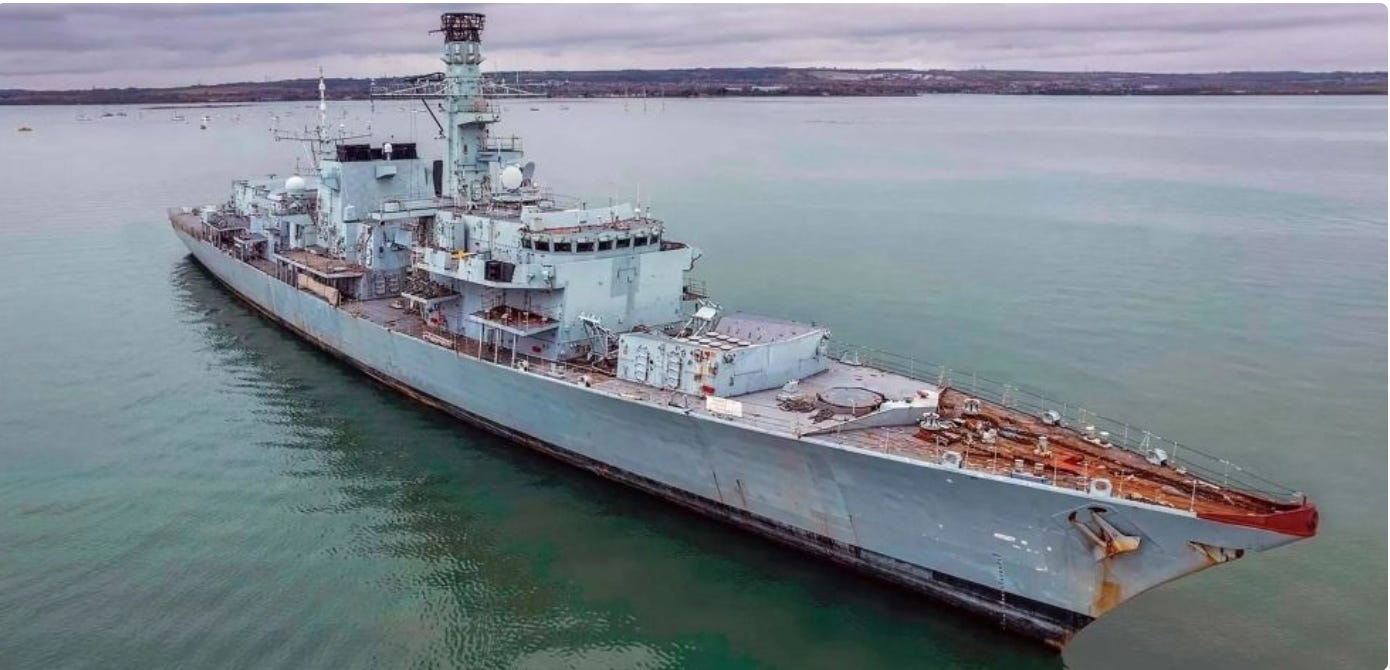Though “Big Navy” has been doing its best not to talk about the exceptional performance of our DDG Sailors in the Red Sea over the course of the last few months - an incredible intentional missing of a once in a generation opportunity to trumpet the advantages of a sufficiently capitalized Navy that we don’t have at the moment - there is a lot to be proud of with our Navy’s performance with what we’ve been able to surge in place in an attempt to keep the global sea lanes open (you’re welcome other 80% of the world sitting on your hands).
In a positive way, at least internally we are gaining invaluable information from these engagements in the Red Sea, from refining our software to seeing areas where we may need to expand weaponeering options…but we should also be clear-eyed of the fact that the Houthi are not even a 4th rate military power. No, they are a non-state proxy for Iran who just happen to be athwart one of the most critical choke points on the planet.
All the challenges our Navy faced on October 6th - from insufficient battle force ships, to a short-legged air wing, to shallow magazines, remain.
We are not facing the best anti-ship weapons using well-staffed tactics and CONOPS. No, we are swatting down low-end weapons with high end weapons.
Welcome to 2024’s version of the British Martin-Henry v. Zulu Iklwa…except with better results.
We are still in a fragile state for any “ask” west of the International Date Line.
Our best allies are helping. The best of the best, again, is the United Kingdom. We need to be careful thinking that we can tread water in repairing the neglect of our navy as long as we have allies to boost our capabilities.
As I like to do, let’s get a snapshot of the Royal Navy. How is she doing? Well, Lewis Page over at The Telegraph is having a bit of a down day, and he’s going to take us with him;
The Royal Navy cannot recruit enough sailors. Two of its shrinking force of frigates will be decommissioned without replacement, it is reported. This, it is said, is to ensure there are sufficient numbers to provide ship’s companies for new frigates. But the fact is that the service doesn’t have enough people even for the few vessels it has left.
…
Apart from cultural matters, there is the palpable state of weakness. The few remaining frigates are very old and worn out. The handful of destroyers break down catastrophically all the time, and are feebly armed. Our new aircraft carriers had no jets at all for 95 per cent of 2022. Our submariners have to do six-month patrols due to maintenance failures.
The one thing the 1990s RN was genuinely good at, far better than the US Navy, was mine countermeasures.
But we are getting rid of our entire minehunter fleet, whose work can apparently now be done by a couple of cheap civilian-crewed auxiliaries. (None of the other expert mine-warfare navies is doing this – and the fleet auxiliary’s manpower situation is even worse than the RN’s.)
We knew The Terrible 20s were going to be terrible. Almost exactly 14-yrs ago over at the OG Blog, I introduced “The Terrible 20s.” Re-reading it today, it holds up pretty well. The end of that February 2010 post especially well. This warning applies still.
Look at what the Royal Navy is dealing with today, and it isn't a stretch to see similar challenges for ourselves. Look and learn - and perhaps we can mitigate the pain.
We'll be blogg'n about the 20's a lot down the road; let's call this an introduction to the Terrible 20's.





You have to ask yourself why a Navy that once dominated the globe cannot find enough sailors to man its few remaining ships.
The answer is obvious.
The Marxist claptrap has infected the British soul. Children are told that their entire history is nothing but exploitation, oppression and slavery. And if you say otherwise you can be arrested.
Would you fight for king and country if believing in non-woke concepts could land you in jail?
Worse, we are only a little ways behind the UK on the way to Niagara.
Exchange RCN for RN. It’s even worse up here.